The picture is characterized by great architectonics, complexity and multi-figure composition, a variety of angles, freedom in the construction of forms. Using the technique of “a picturesque story,” Goncharova takes
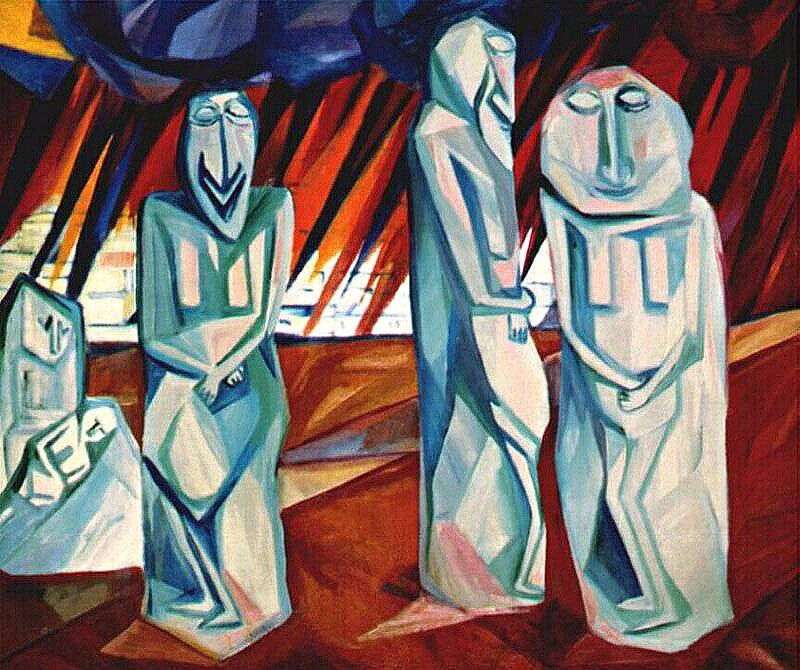

The picture is characterized by great architectonics, complexity and multi-figure composition, a variety of angles, freedom in the construction of forms. Using the technique of “a picturesque story,” Goncharova takes
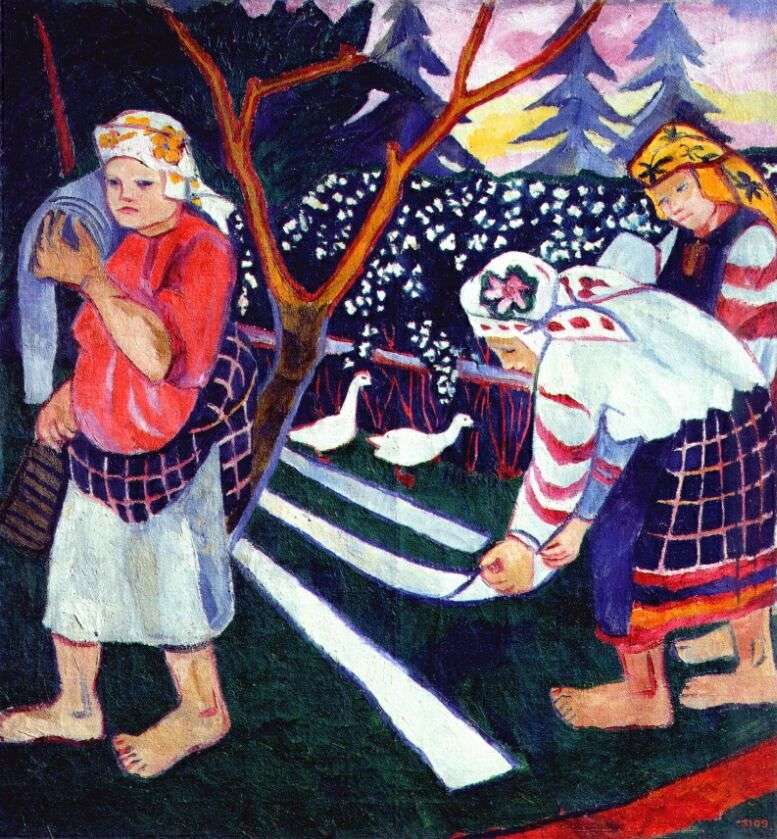
A naive picture of the life of Russian peasants. Linen cloth made by the peasants themselves. They grew flax, then they beat him, spun yarn, and then weaved the canvas.
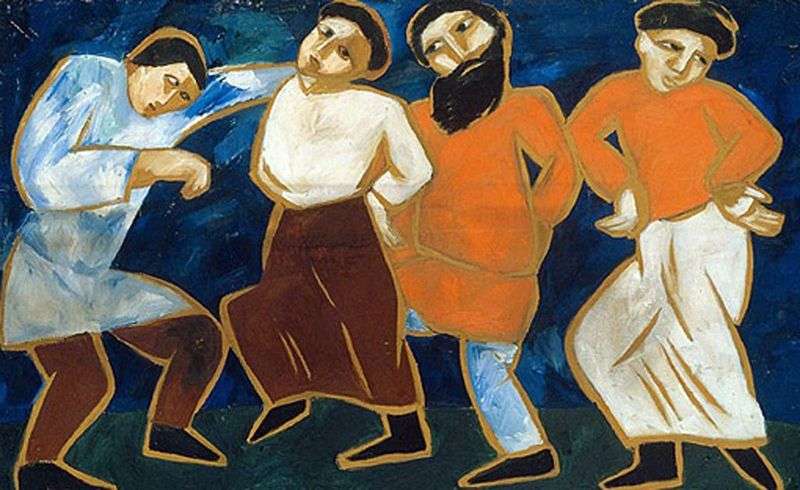
A group of peasants perform folk dance, lined up in a chain. With imperturbable faces they are sorting out with their feet in the dance. The picture resembles a child’s
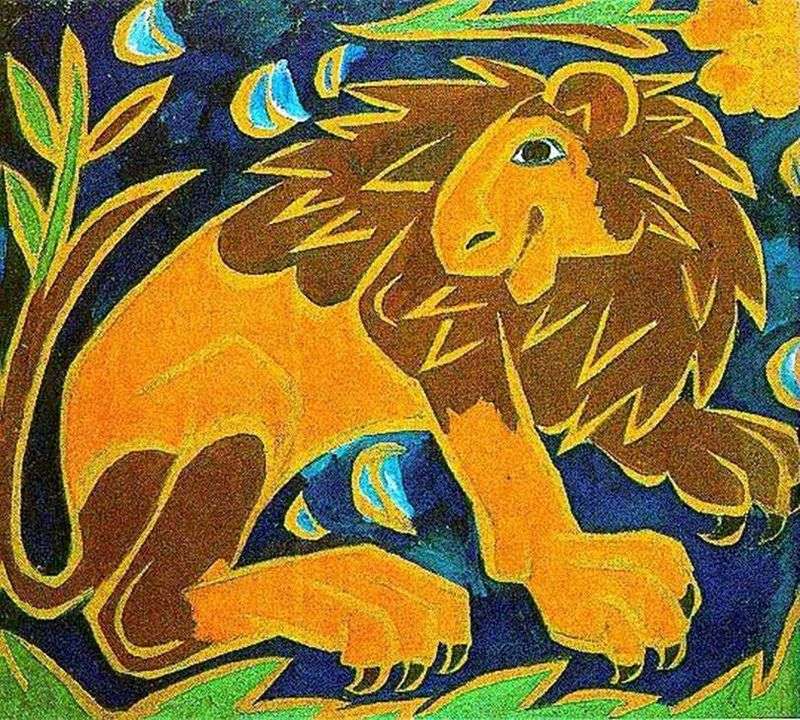
And this picture is like a child’s drawing. But the image of the lion is most likely a lion cub, very lively and expressive. Written in the same way with
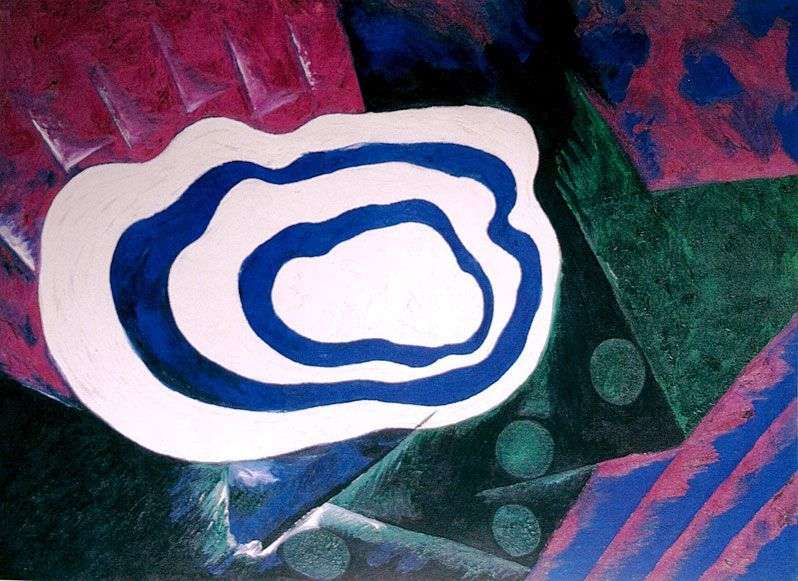
This picture is an exception and, at the same time, innovation. In the works of Goncharova for the first time, almost all Russian avant-garde painting appears an abstract structure in
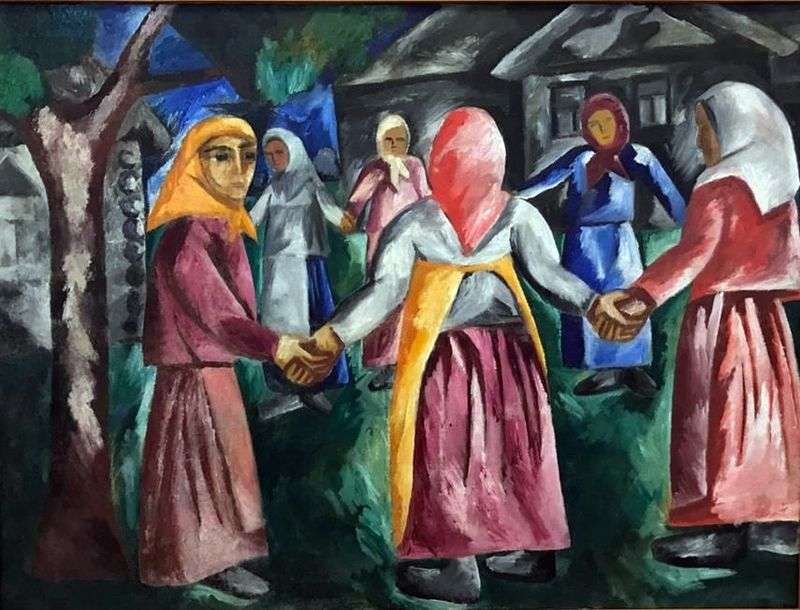
The creative heritage of NS Goncharova is represented by numerous paintings, illustrations, sketches for performances, decorations, clothes and fabrics for foreign fashion houses. In 1913 it was Goncharova who made

To understand the peculiarities of Natalia Goncharova’s work, two circumstances should be noted: this illustrious Russian artist, the heiress of the classical cultural Russian tradition, was also nicknamed “the Amazon
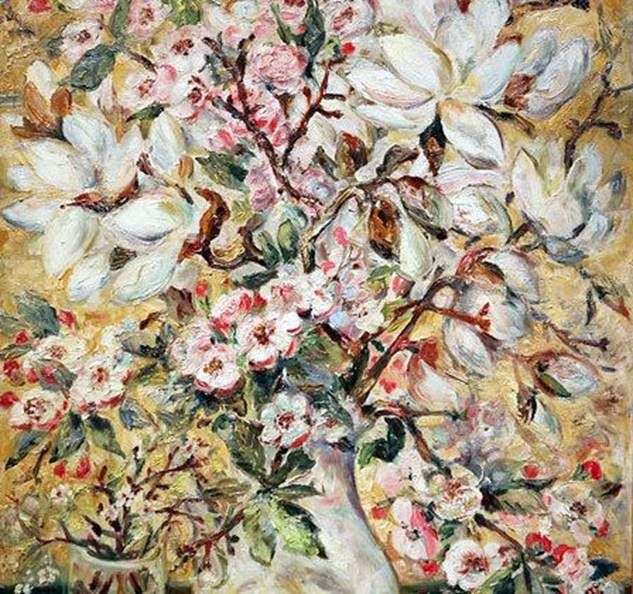
This still life falls out of a series of primitivistic paintings by Goncharova. Amazingly luxurious bouquet of branches of luxuriant flowering trees fills the whole space of the picture. A

The theme of the Spanish beauty takes an important place in the work of Goncharova after the artist’s trip to Spain in 1916. She not only refers to the Spanish
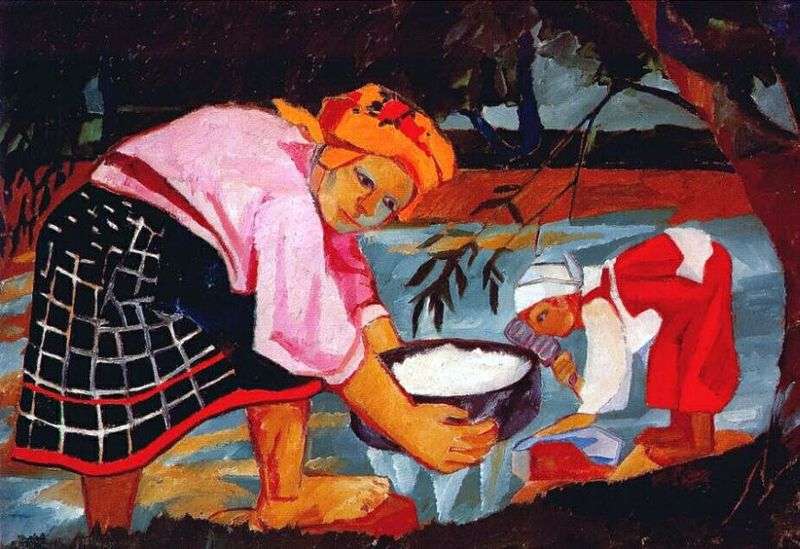
Another scene from the life of ordinary Russian women. They rinse the washed laundry in the river. One went down to the bank and from the bridge rinses the linen
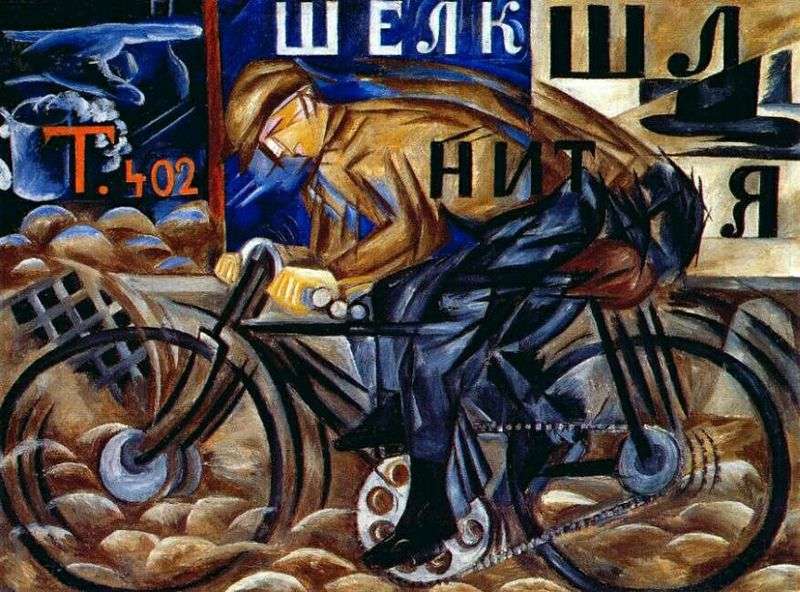
The picture accurately conveyed the rapid speed of movement. By the rushing biker, street signs flash and merge into one. The rapid movement of the wheels is transmitted through their
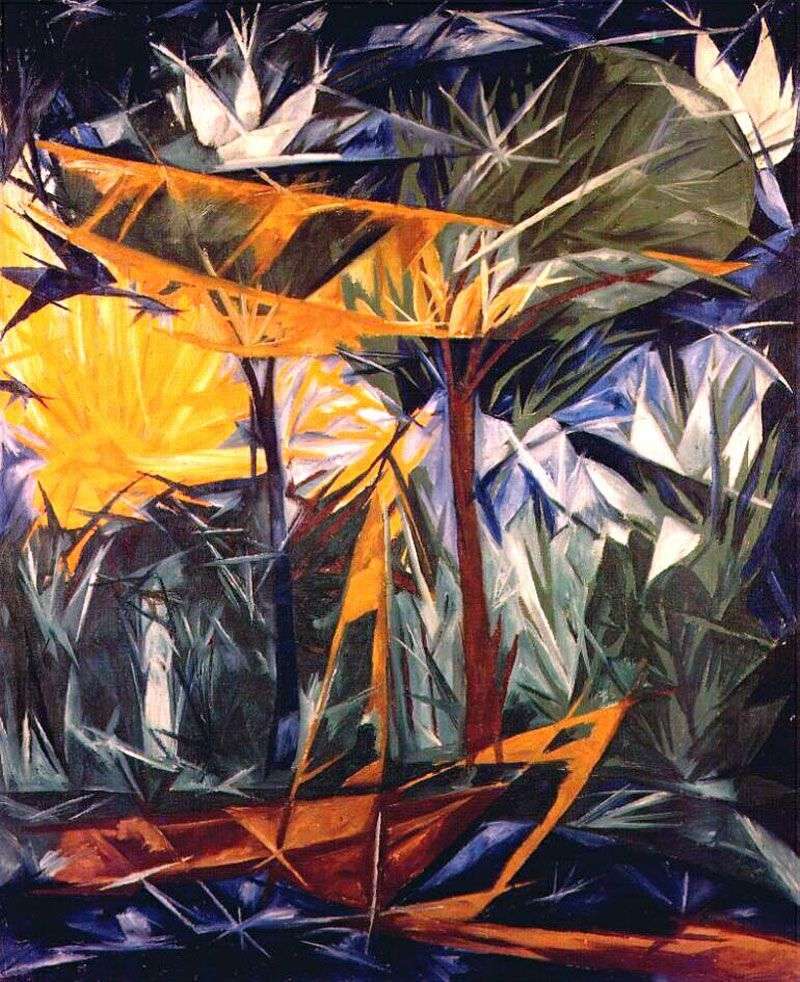
One of a series of “radiant landscapes.” Everything in this picture is blurred by glimpses of intersecting rays, behind them the outlines of trees can hardly be guessed. In the

The summer landscape is the river bank, trees, and far away a large cultivated field. Work and recreation of people and animals are depicted here. The horses were brought here
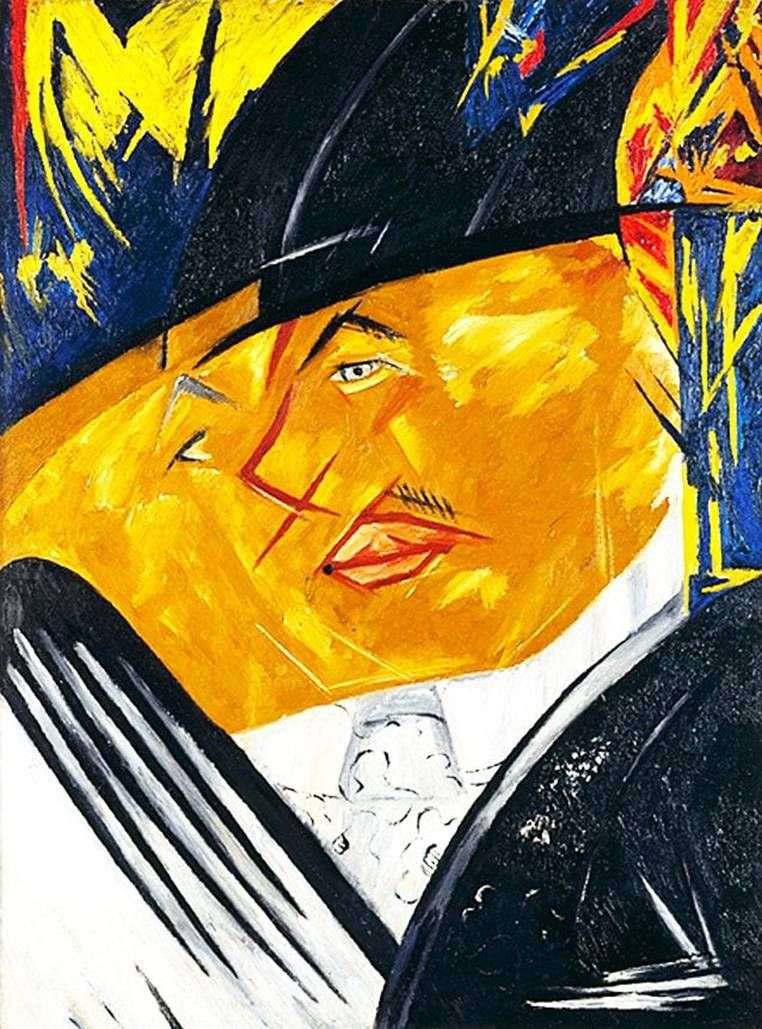
The portrait of the artist’s husband was created in the technique of “rayism”, to which N. S. Goncharova applied in the years 1912-1913. They met at the school, where they

“Gathering” is not a suite about agricultural work, but a series of images with Christian symbols. Representing Christ surrounded by grape branches, the artist turned to ancient iconographic sources, when
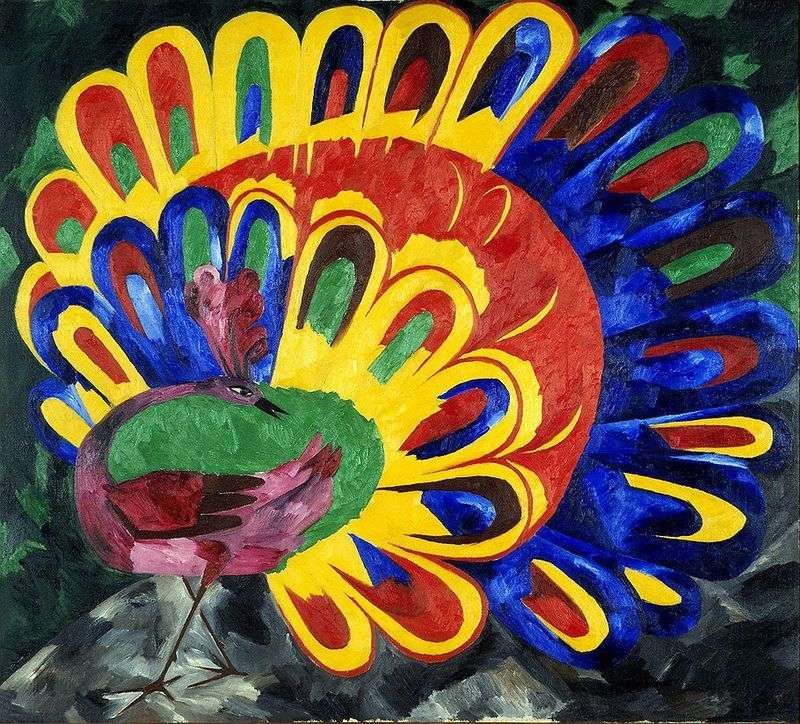
The artist depicted the same peacock in 10 styles. A whole series was created under the title “Artistic possibilities about the peacock”. He was her symbol, a symbol of her
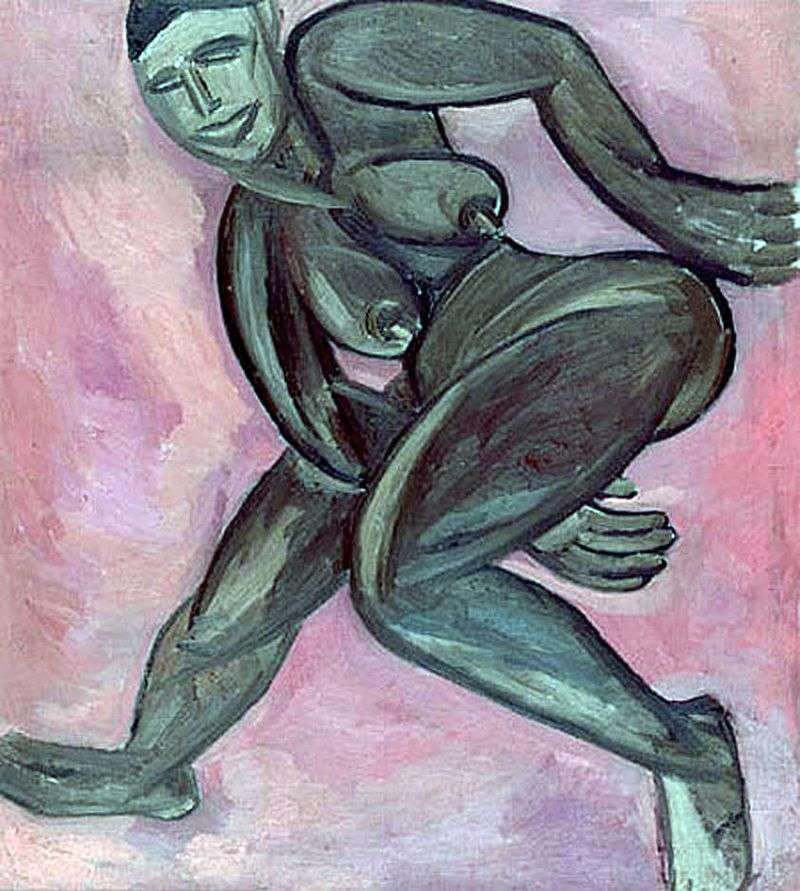
This picture is an illustrative example of Goncharova’s primitivism. She breathes the superenergy of the movement of nature and the dynamism of the painting itself. Simultaneously, it is close to
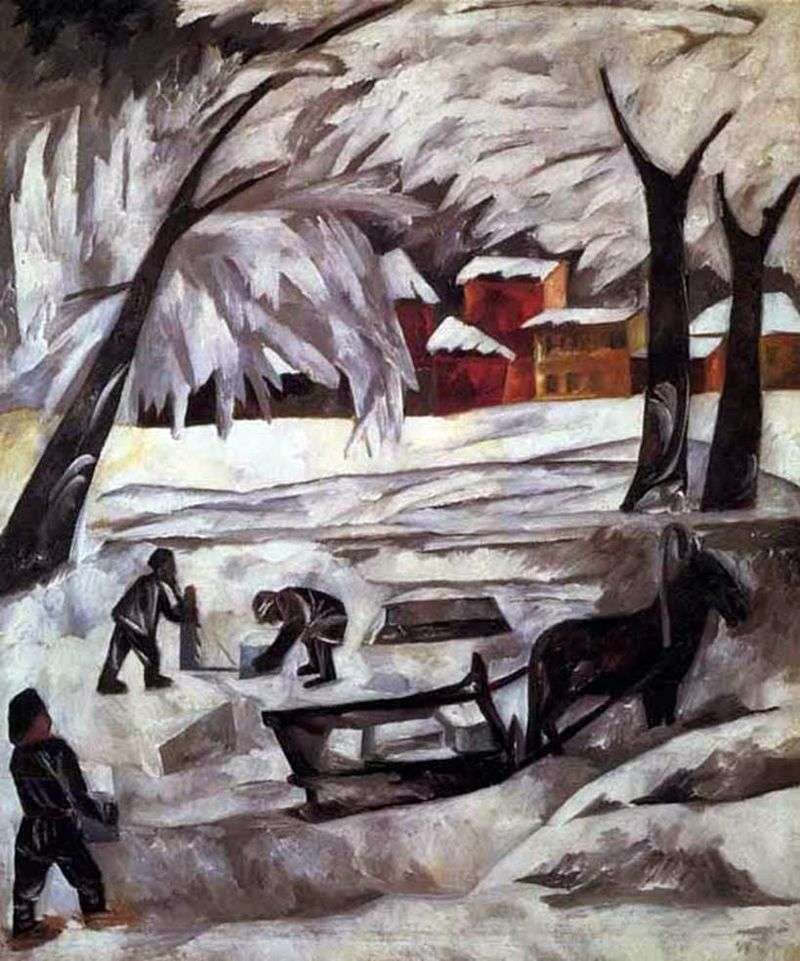
Very expressive picture. It turns out that the tradition of creating ice sculptures has arisen for a very long time. Here and here a group of men cuts out a
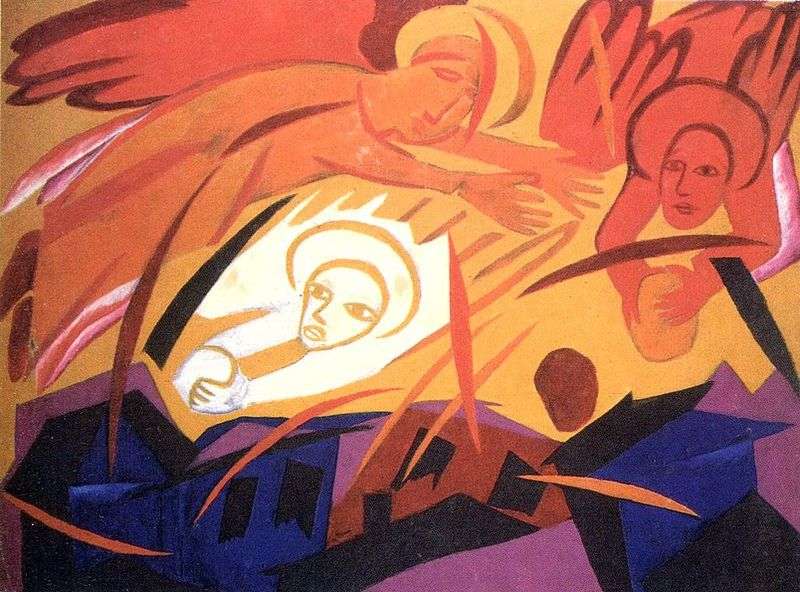
One of the 9 expressive paintings of the general cycle called “Reaping”. In this picture Goncharova builds her religious picture of the world. The top of this world is the
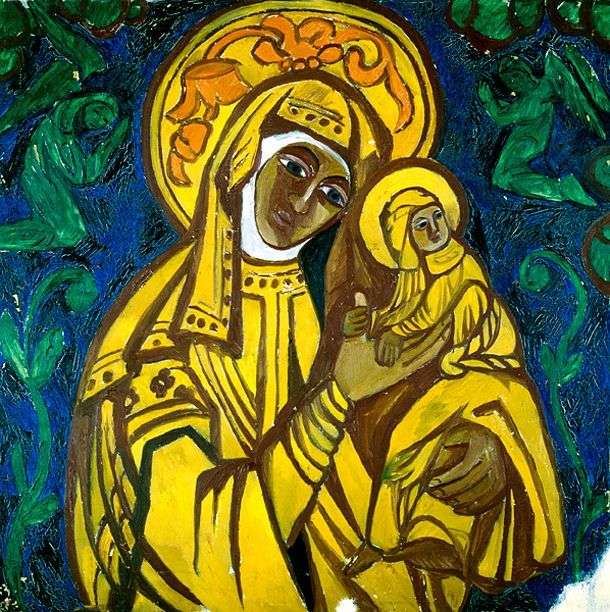
The picture is made in the spirit of Russian iconography. The artist used the traditional schemes and techniques, and at the same time, she was not bound by any framework.
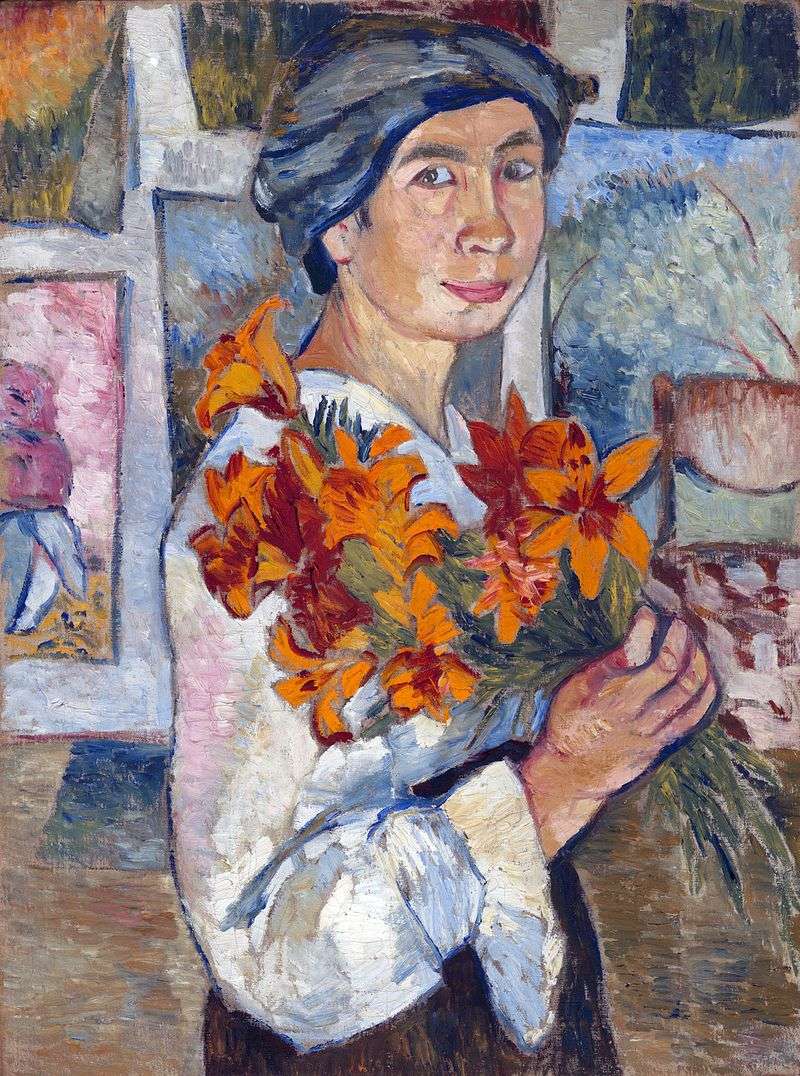
This work, above all, a self-portrait of the artist: the author depicted herself against the background of the studio walls hung with paintings. Vigorous expressive painting creates an image of